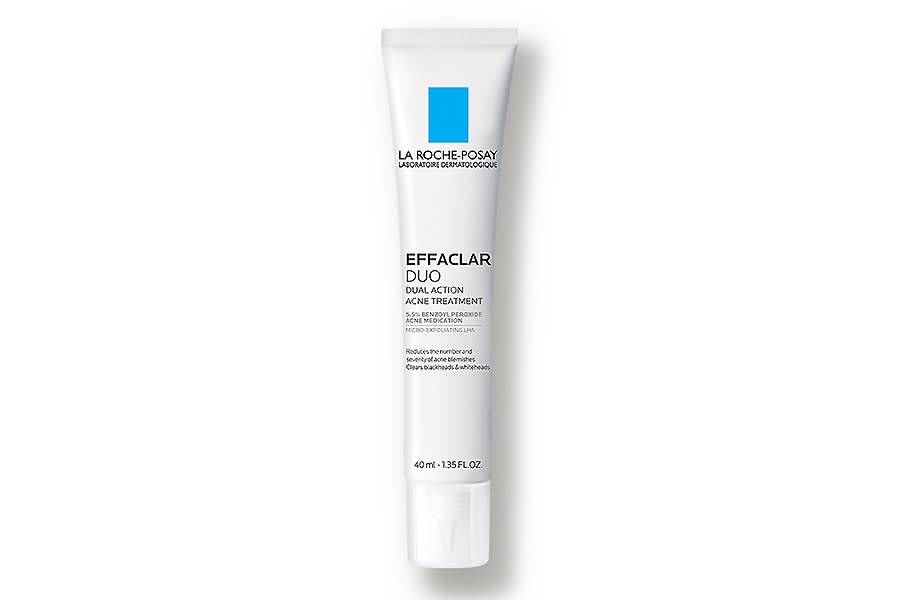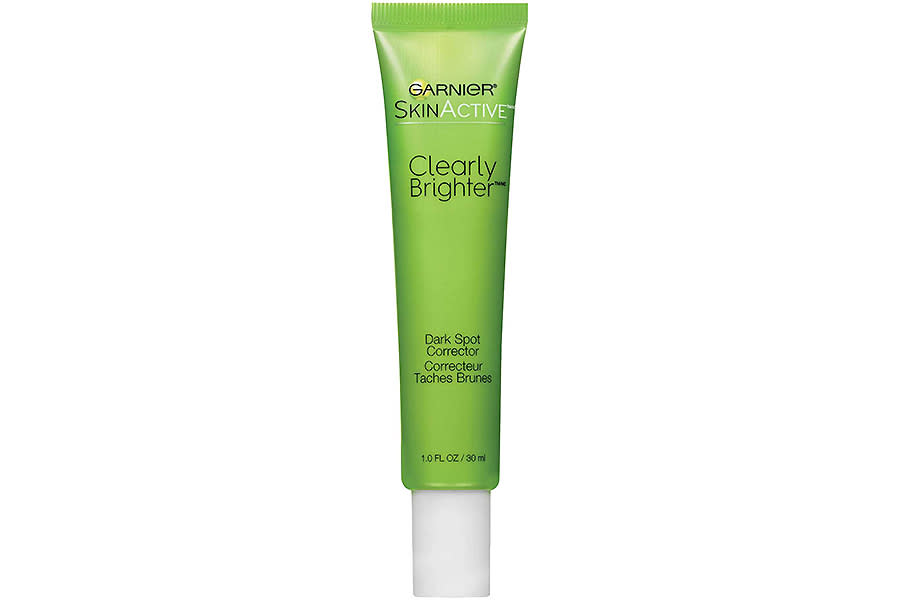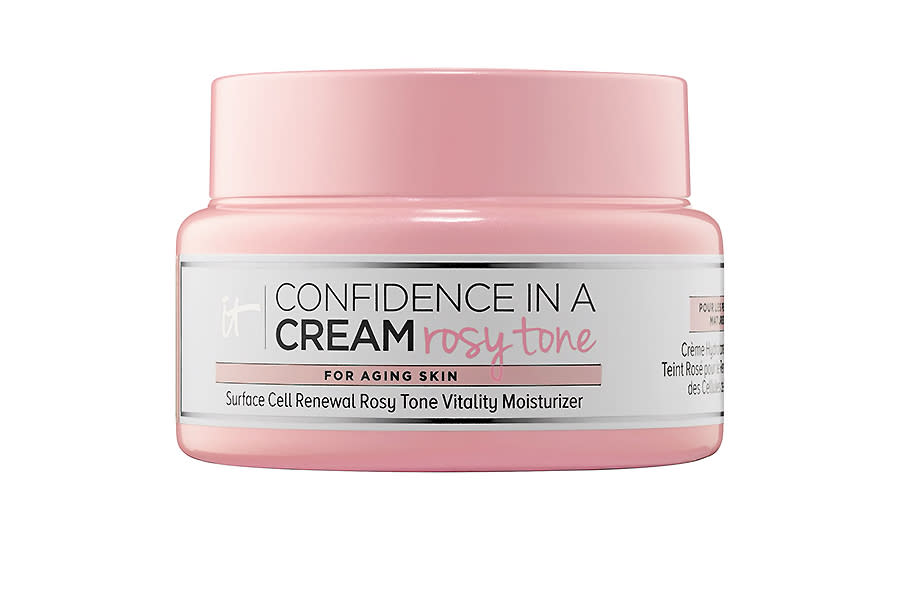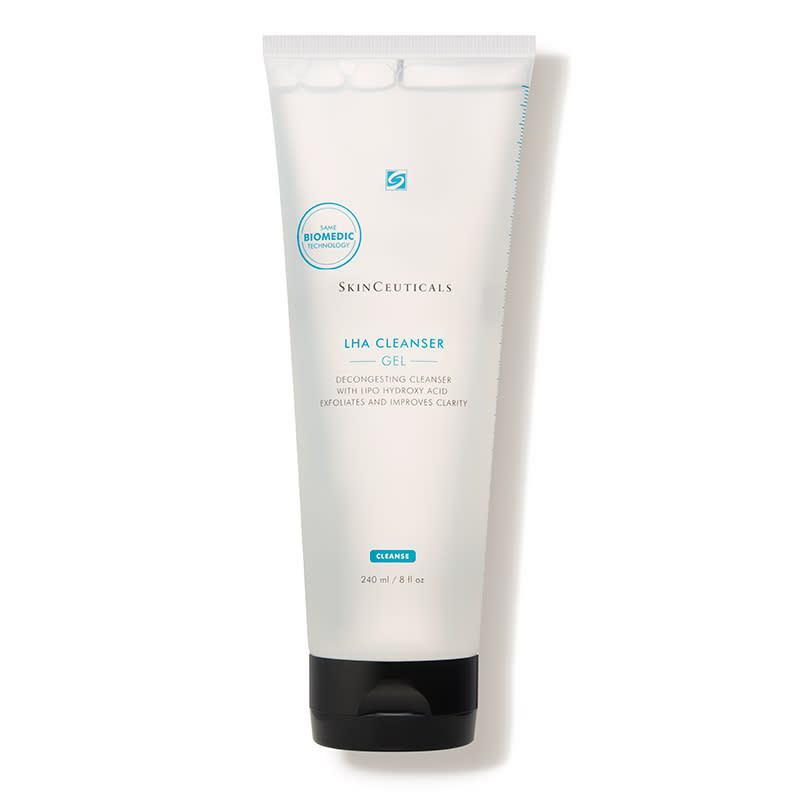This is everything a dermatologist wants you to know about lipohydroxy acid
If you feel like you know all there is to know when it comes to using acids in your skin care routine, think again. Sure, you might be a total pro when it comes to alpha-hydroxy acids (glycolic acid, lactic acid), beta-hydroxy acids (salicylic acids), and maybe even polyhydroxy acid (PHAs), but are you all brushed up on the new kid on the block, lipohydroxy acid? LHA (for short) is a derivative of salicylic acid—making it a BHA—and is very much on our radar lately, for good reason.
The chemical exfoliator is a gentler alternative for those whose skin may not tolerate salicylic acid but still want something that can help treat acne-prone skin. We reached out to David Lortscher, M.D., a dermatologist and founder of custom skincare brand Curology, who filled us in on everything we need to know about lipohydroxy acid.
What is lipohodroxy acid?
Lipohydroxy acid, or LHA, is a beta-hydroxy acid (BHA), explains Dr. Lortscher. “BHAs are oil-soluble and usually refer to salicylic acid,” he says. LHA in particular is a salicylic acid derivative with higher molecular weight and stronger lipophilic properties, which means it’s able to dissolve in lipids/fats.
What are the skin care benefits of using lipohydroxy acid?
“It is thought to have skin-renewing, exfoliating, and acne-treating properties,” says Dr. Lortscher. “Although more studies are needed, preliminary evidence has found lipohydroxy acid to be helpful in the treatment of acne due to its antibacterial, anti-inflammatory, and anti-fungal properties.”
It’s also comedolytic, which means it prevents blemishes from forming when oil becomes trapped in pores. Better yet, it actually targets sebum-rich sebaceous glands, further preventing acne. “Exfoliation may also enhance the effects of other acne-fighting products by reducing the barrier of dead skin cells, thus allowing for better penetration into the skin,” says Dr. Lortscher. That means that if you’re using other active ingredients in your routine, incorporating LHA as a first step could help your other products better absorb into the skin, making them more effective and therefore helping you get a better bang for your buck, if you will.
Anything else?
In general, “chemical exfoliants dissolve the ‘cement’ that holds dead skin cells on the skin’s surface, allowing them to be shed more efficiently,” explains Dr. Lortscher. This can address issues like dryness, dullness, and flaky skin. What’s great about lipohydroxy acid is how gently it does this. In a study published by dermatologist Joshua Zeichner, M.D., it was found that “the slow penetration of lipohydroxy acid results in an individual cell-by-cell exfoliation that is associated with excellent tolerability.”
What skin types is lipohydroxy acid best suited for
“LHA could be a good alternative for those who can’t tolerate other chemical exfoliants,” suggests Dr. Lortscher, “because its larger molecular structure could produce slower, less-deep skin penetration. Preliminary evidence suggests that LHA could be a gentler and better-tolerated chemical exfoliant than salicylic acid.” In other words, for those with sensitive and acne-prone skin, lipohydroxy acid could prove to be quite the game-changer.
That being said, it’s always better to err on the side of caution, especially when it comes to your skin’s health. “Lipohydroxy acid is theoretically safe for all skin types, as it has a pH similar to normal skin (pH 5.5), but our general skin care advice is to introduce new products cautiously,” Dr. Lortscher says. “If you have any concern that a product may not react well with your skin, we recommend applying the product to the inner part of your upper arm twice daily for seven days. If all goes well, go ahead and try on a limited area of your face.”
Any words of caution?
“Be careful not to over-exfoliate, especially if you have sensitive skin,” warns Dr. Lortscher. “Over-exfoliation can cause redness, a feeling of tightness, sensitivity, and soreness. Aggressive use of physical or chemical exfoliants can compromise the outer layer of your skin, impairing its ability to shield you from external damaging factors.”
Below, we’ve hand-selected some of our favorite skincare products that feature LHA, so you can try out the new, gentle exfoliator for yourself.
1La Roche-Posay Effaclar DUO Acne Spot Treatment

This spot treatment uses a blend of benzoyl peroxide and lipohydroxy acid that works fast to help clear up acne blemishes, whiteheads, and blackheads. Like, really fast. The brand claims that you may see results in as soon as three days, but always remember that every skin type is different and reacts differently to skincare products, so you may need to wait a while longer to see results. To use, first remove makeup and cleanse skin thoroughly, and then apply on targeted areas.
2Garnier SkinActive Clearly Brighter Dark Spot Corrector

This skin-brightening, acne-clearing, and dark spot-fading treatment combines LHA with vitamins C and E to help increase skin cell turnover for a more radiant complexion. Use twice a day after cleansing skin, and once the product absorbs, seal in the ingredients by adding your favorite moisturizer on top.
3IT Cosmetics Confidence In A Cream Rosy Tone

Gently exfoliate dull skin and give your face and neck a boost of hydration with this moisturizer. Its rosy-toned pigments visually give skin an instant pick-me-up, and in the long run, this moisturizer will stimulate cellular turnover for a brighter complexion.
3 SkinCeuticals LHA Cleanser Gel

Many people immediately think of Skinceuticals’ cult fave CE Ferulic Serum when they think of the brand, but the often-sold out LHA Cleanser has a near-obsessive following of its own, thanks to its acne-fighting combination of lipohydroxy acid, glycolic acid, salicylic acid. If you can get off the waitlist (and we suggest you try), use twice a day by gently massaging the product into your face and neck and rinsing with warm water.

